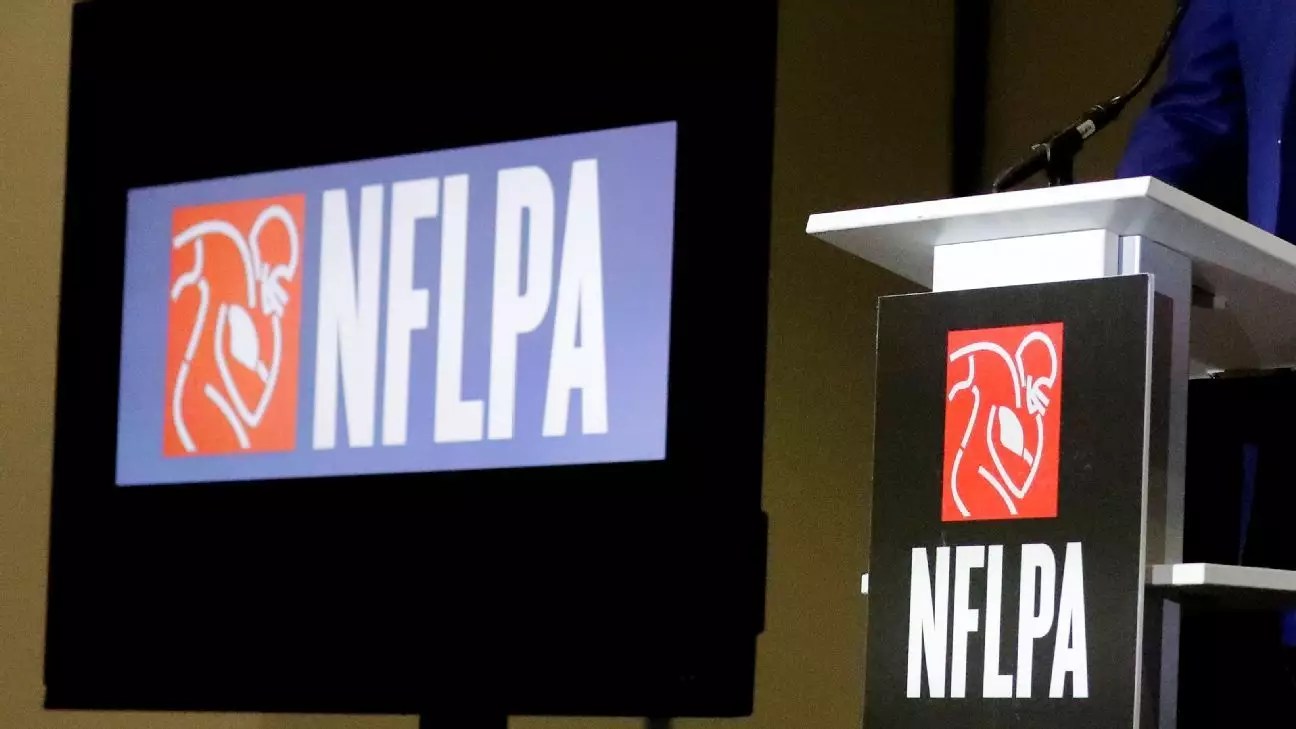In recent weeks, the NFL Players Association (NFLPA) has found itself mired in controversy and uncertainty, exposing a leadership crisis that goes beyond mere administrative shuffles. The appointment of David White as interim executive director, while seemingly a step towards stability, reveals deeper issues plaguing the union’s governance and its ability to serve the very athletes it represents. White’s background, impressive on paper, does little to reassure critics concerned about transparency, independence, and the union’s capacity to fight for players’ core interests amid the chaos.
The NFLPA’s leadership transition exemplifies how fragile trust between players and their union remains, especially when leadership is perceived as entangled in outside financial interests or hidden agendas. The resignation of Lloyd Howell Jr. after only ten days in the role unveiled alarming questions about integrity and conflict of interest, sapping the confidence of players who demand more than just superficial reforms. The union’s internal struggle to find a leader who can truly restore credibility is emblematic of a broader systemic failure—a failure to prioritize the players’ well-being over opaque alliances or outdated power structures.
More troubling, perhaps, is the process itself. The secrecy surrounding Howell’s election in 2023, the limited transparency of candidate selection, and the half-hearted efforts to involve the membership reflect an organization still rooted in old union management practices. Players’ voices are nominally central, yet their ability to influence meaningful change remains compromised by closed-door elections and closed-door negotiations. The union seems unable to shed its cloak of secrecy, fostering skepticism instead of solidarity.
Leadership Candidates – The Illusion of Choice
David White’s sudden ascension might seem like a fresh start, but it conveniently obscures a bleak reality—the lack of genuine democratic processes in choosing union leadership. White, an outsider with a storied career outside of athletics and union politics, entered the scene without featuring on the leaked league memo that detailed the final shortlist. His appointment raises eyebrows because it highlights how insiders and players often find themselves sidelined in favor of external figures, regardless of their capacity to genuinely advocate for players’ needs.
The fact that the final shortlist included union insiders like Don Davis and Charlie Batch suggests that players did have some influence, yet skepticism persists. If leadership is perceived as outsider-driven or disconnected from players’ grassroots struggles, confidence erodes. The union’s recent history—marked by reports of conflicts involving private equity, hidden conflicts, and alleged misappropriation—further erodes trust. It’s difficult to believe that a leader thrust into this environment can quickly restore faith when the trauma from Howell’s resignation still lingers.
Encouragingly, NFLPA President Jalen Reeves-Maybin emphasizes that the union will pursue a player-led process for selecting a permanent director. But intentions alone cannot heal wounds inflicted by opaque procedures. The union must actively dismantle its secretive culture and foster transparency. Otherwise, players will continue to see leadership as detached and self-serving, rather than genuinely committed to their collective welfare.
Accountability in Question: The Union’s Credibility Crisis
The root of this leadership chaos lies in a fundamental crisis of accountability. Howell’s brief tenure exposed not only personal misconduct—such as allegedly working for a private equity firm and engaging in questionable expenses—but also the union’s failure to scrutinize its own leaders effectively. Given the union’s mission to protect players’ health, safety, and economic interests, a leadership marred by conflicts of interest and secrecy severely undermines its credibility.
Players instinctively recognize this betrayal, with several expressing concern that the union’s leadership remains more aligned with league interests or outside corporate entities than with the athletes’ welfare. The mention of private equity involvement in league affairs, coupled with reports of confidential arbitration processes shielding owners from scrutiny, amplifies suspicions that the union’s leadership operates in a bubble of complicity rather than advocacy.
This crisis demands more than cosmetic change; it calls for a fundamental overhaul of governance structures. The union must implement transparent vetting processes, enforce strict conflict-of-interest rules, and establish clear channels for player participation. Anything less risks perpetuating the cycles of distrust and disillusionment that threaten to fracture NFL players’ unity at a critical juncture.
Potential for Renewal or Repetition?
While White’s appointment might appear to bring hope for stability, it risks becoming another stopgap in a cycle of reactive leadership rather than proactive reform. The union’s willingness to entertain external candidates with notable labor experience signals some awareness that change is overdue—but genuine change can only occur if the process involves the membership at every stage.
The danger lies in the union’s continued reliance on insiders or outsiders chosen through opaque mechanisms, ultimately fostering a sense of disenfranchisement among players. Trust, once broken, is hard to mend, and token gestures will do little to truly restore the faith required for effective collective bargaining. The upcoming search for a permanent director must be rooted in inclusivity, transparency, and a sincere commitment to prioritize players’ voices, rather than merely placating external pressures or maintaining the status quo.
Furthermore, the broader societal context—where athletes increasingly speak out about labor rights, safety issues, and economic fairness—provides an opportunity for the NFLPA to become a genuine force for change. But only if it confronts its own governance issues head-on, shedding the cloak of secrecy and embracing democratic transparency. Without tangible reforms, the union risks perpetuating a cycle of superficial leadership changes, leaving players vulnerable to exploitation and unable to assert the agency they deserve.

